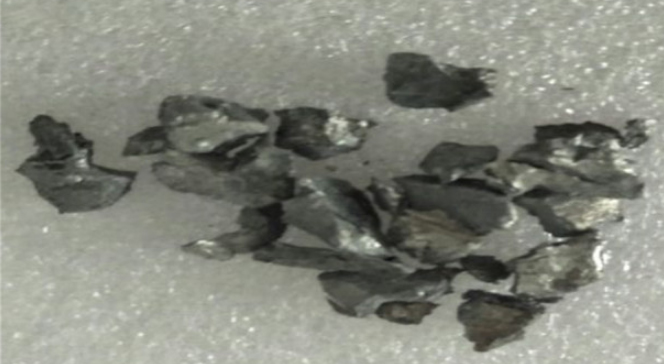Holmium metal
Atomic number 67
Atomic mass 164.93
Temperature
melting point:С 146
Holmium is a bright silvery, soft and pliable material. It does not
react in dry air and at normal temperatures, but quickly oxidizes in a
humid environment or when heated, becoming yellow. In 1879, the Swiss
chemist and physicist Jacques-Louis Soret discovered a new element in
the "erbium earth" using spectral analysis. The name of the element was
given by the Swedish chemist P.T.Kleve in honor of Stockholm (its old
Latin name is Holmia), since the mineral from which Kleve himself
isolated the oxide of the new element in 1879 was found near the capital
of Sweden. Holmium, together with other rare earth elements, is
contained in the minerals monazite, bastenesite, euxenite, apatite, and
gadolinite.
Holmium's claim to fame is as the Numero Uno among supermagnets beating
out the far better known and fellow Rare Earther neodymium for the title
but much less popular because its magnetic properties require special
activators.
.
.

Atomic number 67
Atomic mass 164.93
Temperature
melting point:С 146
Holmium is a bright silvery, soft and pliable material. It does not
react in dry air and at normal temperatures, but quickly oxidizes in a
humid environment or when heated, becoming yellow. In 1879, the Swiss
chemist and physicist Jacques-Louis Soret discovered a new element in
the "erbium earth" using spectral analysis. The name of the element was
given by the Swedish chemist P.T.Kleve in honor of Stockholm (its old
Latin name is Holmia), since the mineral from which Kleve himself
isolated the oxide of the new element in 1879 was found near the capital
of Sweden. Holmium, together with other rare earth elements, is
contained in the minerals monazite, bastenesite, euxenite, apatite, and
gadolinite.
Holmium's claim to fame is as the Numero Uno among supermagnets beating
out the far better known and fellow Rare Earther neodymium for the title
but much less popular because its magnetic properties require special
activators.
.
.

|
|
